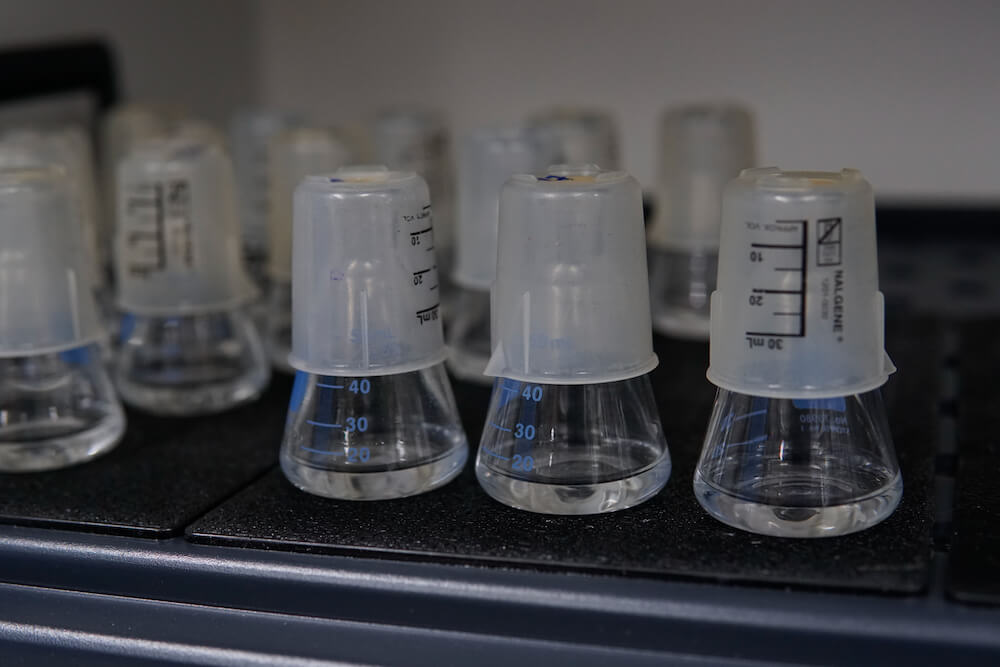Before he discovered bacteriophage, Felix d’Hérelle battled plagues of locusts in Argentina. His weapon of choice was a bacterial pathogen of locusts, which he sharpened through evolutionary “training”. By passaging the bacteria on target locust hosts, d’Hérelle enhanced their virulence. He then deployed the trained pathogens to eradicate wild locust infestations.
Today, many groups are eager to unify d’Hérelle’s work on phages and evolutionary training to enhance their own phages for killing bacterial pests. However, efforts have met with mixed results. In our recent study published in PNAS, we demonstrate that using coevolution to train phages drastically enhances their efficacy, and we identify numerous mechanisms by which our trained phages improved.
Phage training to combat phage resistance
One of the greatest barriers to the development and success of phage therapy is the breakneck speed at which bacteria evolve phage resistance. However phages, unlike antibiotic drugs, have the potential to solve this problem using the inherent, natural algorithm of evolution. By reciprocally adapting to their evolving hosts (coevolution), phages have maintained the ability to infect them since time immemorial. In coevolutionary training, phages evolve with and experience the ways their hosts evolve resistance. Afterwards, the hope is that trained phages will be more effective therapeutics because they will have evolved ways to counter resistance in their host.
In our study, we first trained phage λ by coevolving it with a strain of E. coli. Then, we evaluated how it improved compared to untrained λ. Notably, during training, phage λ evolved to use an additional receptor (untrained λ uses receptor LamB, trained λ uses LamB and OmpF).
Enhanced suppression via many mechanisms
In flask cultures, untrained phages were unable to keep bacteria suppressed for more than a couple days. Resistance evolved quickly and phages could not reclaim the upper hand. In contrast, trained phages suppressed bacteria >1000-fold for as long as 3 weeks. After discovering that our trained phage was so much better, we wondered why is it so much better? In sum, we found that:
- The mutation rate of resistance against the trained phage was 100-fold lower than that against the untrained phage.
- The earliest mutations acquired for resistance against the trained phage only conferred partial resistance.
- To attain high levels of resistance against the trained phage, the bacteria needed several mutations, whereas a single mutation sufficed for resistance to the untrained phage.
- Bacterial mutants that were resistant to the trained phage suffered large growth costs.
- The trained phage was better able to counter when the bacteria evolved resistance.
Ancient infections can improve today’s phages
When we sequenced our trained phage, we discovered that it had recombined with a gene of a defunct prophage in its host during training. Moreover, this event drastically improved the phage’s growth rate. It seems that, in the distant past, an ancient phage infected our bacterium’s ancestor, integrated into its genome, and then lost the ability to pop back out. Through the ages, prophage genes were lost until only a fragment remained. Finally, during training, phage λ picked up a chunk of the remaining DNA. We find it remarkable that an ancient phage deposited information about how to better infect its host—within its host—and that our phage picked up this information during training.
Benefits of using multiple receptors
Did we get lucky when we picked our trained phage? To test this question, we isolated and evaluated 12 new phages from separate bouts of training. Six phages could use both receptors like the original trained phage. Six phages could only use one receptor. We found that trained phages using one receptor were better than the untrained phage, but the largest effects of bacterial suppression and delayed resistance were driven by dual receptor use.
Conclusion
In our study, we demonstrate the efficacy of coevolutionary phage training and, more importantly, we identify several complimentary mechanisms by which training improved our phage. The improved efficacy of our trained phages was largely driven by the evolution to use multiple receptors. Surprisingly, recombination with defunct prophage genes was also a mechanism that greatly improved our phage during training.
Want more like this?
Check out Josh Borin’s talk about this work on Clubhouse — Phage Phridays!
Want to learn more about phage training? Check out How to Train a Phage, part 2, on Clubhouse — Phage Phridays, which featured Dr. Ville-Petri Friman.
Read our past C&T feature article by David Sáez and Lorenzo Corsini, who recently wrote a guest post on their work doing ‘phage breeding’ at PhagoMed!
Many thanks to Atif Khan for finding and summarizing this week’s phage news, jobs and community posts!






